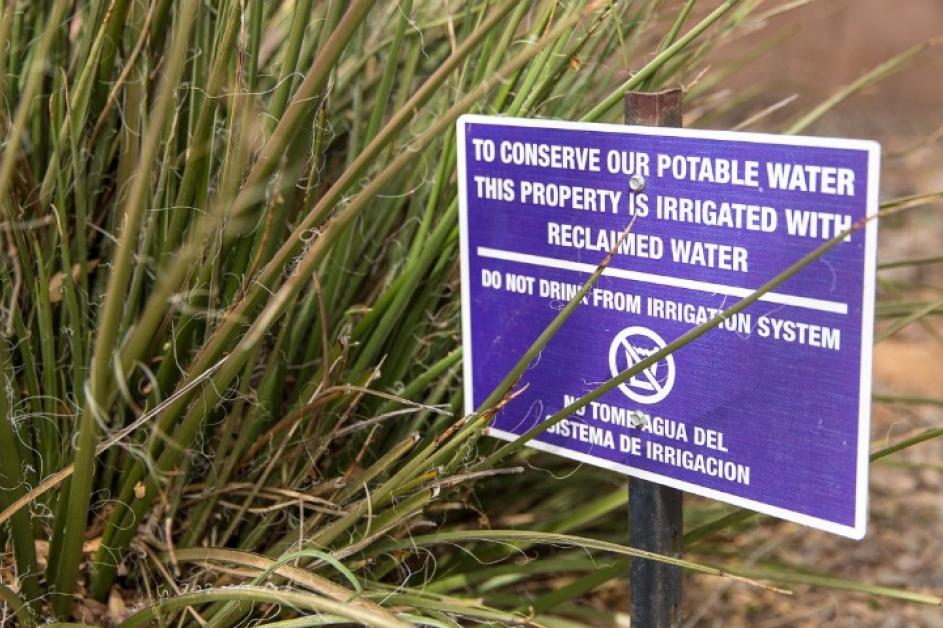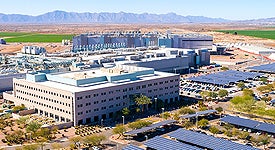
Originally ran in the SanTan Sun News – April 25, 2021
We live in a desert. Obviously, this isn’t a surprise. Whether you were born here, or have moved here from other locations, you understand the concept of the dry heat and climate unique to the Sonoran Desert in which Chandler is located. It also isn’t a surprise that since we live in a desert, we must be prepared for dry desert conditions and take measures to ensure that there is an adequate supply of water, now and in the future.
The U.S. Bureau of Reclamation recently released its August 24-Month Study, which projects operations for the Colorado River system reservoirs for the next two years. The study confirms that Lake Mead will drop below elevation 1075’, which will trigger a Tier 1 Shortage in 2022. This means that Arizona will receive less Colorado River water for Central Arizona, primarily affecting agricultural uses.
The City has planned, prepared and proactively enacted innovative measures that guarantee it can provide water to residents and businesses not only for today but for the next 100 years. Chris Connor, the City’s Utility Regulatory Affairs Manager, described the 100-year mark as the water supply requirement mandated by the State of Arizona.
“Water is a limited resource and it takes all of us working together in Arizona to manage supplies and make sure that it isn’t wasted,” Connor says.
Several key factors ensure our water supplies will adequately provide water, even as our population increases and new businesses call Chandler home.
First and foremost is planning. The City has established extensive water allocation policies.
“By setting policies more than thirty years ago, the City ensured that the amount of demand is sufficiently met by the supply,” Connor said. “People might be surprised to learn that our demand for water has actually decreased since Chandler’s early days when agriculture and farming were predominant. Even though our population has increased and industries have moved onto former cropland, the measures that we put in place early on have worked to reduce usage.”
Projections are prepared to anticipate the water usage needs, and usage is closely monitored to ensure that the projections are accurate. This becomes even more important as new developments or expansions are planned; it assures that when development opportunities present themselves we are prepared to meet the needs.
Also, as systems age, the infrastructure that transports Chandler’s water supply to its users is critical. Chandler has proactively instituted a pipe replacement program, to prevent water waste due to breaks or leaks. In addition, Chandler performs an annual audit of the water distribution system to further reduce waste.
Another key factor in Chandler’s preparation that sets the City apart is our access to a diverse water supply. In Chandler, our water supply comes from three sources: surface water, groundwater and reclaimed water.
Surface water comes from rain and snowmelt and collects in lakes and reservoirs. It makes its way to us via streams, rivers and canals. Chandler’s surface water comes from a variety of sources including the Salt River, Verde River and even the Colorado River and Central Arizona Project (CAP) Canal. Our Colorado River water supply starts its journey to us from nearly 1,500 miles away. Because our water supply comes from a variety of sources, even if one source experiences a shortage, the impact isn’t felt as significantly.
Groundwater is the purest water, pumped from deep in the ground via underground wells. The geology of the ground allows water to collect in underground beds of saturated soil or rock, called aquifers, that yield significant quantities of water. You can think of these as Chandler’s water savings accounts. Early planners in the mid-1900s had the foresight to design the City as a retention basin that can handle extensive rain, and to harvest it throughout the City. When we do get significant rainfall in Chandler, it recharges the aquifers.
Finally, in Chandler, every drop of water is used twice due to our extensive reclaimed water system. Wastewater is collected, treated and recycled to be used on golf courses, landscapes and industry. You’ve probably seen the purple signs. The treated reclaimed water is processed through a separate system, with nearly 300 customers currently using it regularly. Chandler is a leader in this technology and the first in the Valley to institute this type of system.
Essentially, the City has invested in the needed resources to effectively manage the limited resource of water in the desert. It does so in order to provide the best value back to the City and its residents through improved quality of life and opportunities for growth, development and employment.
Water is a finite resource, and none of it should be wasted. It’s up to us to use our water supply wisely and efficiently, so it will last for the future. But rest assured that with continued conservation measures and effective management decisions, we will have the water supplies we need for now, and for the generations of the future.
What Can I Do?
It takes only small changes to help save significant amounts of water. Here are some easy, inexpensive, everyday things you can do:
Get on a smart schedule. Don't water your landscape every day. Only apply the amount of water that your plants really need depending on the season. Residents who install a WaterSense approved smart controller to help manage a smarter watering schedule can qualify for a rebate, too.
Timing is everything. Water your lawn early in the morning or late in the evening. Midday watering results in fast evaporation and scorches your lawn and plants.
Control your controller. Know how to operate your in-ground sprinkler system controller. Check sprinkler systems frequently for directional aim and broken heads to prevent watering driveways, sidewalks and streets. If it has rained, you may be able to skip a cycle or two.
Slow the flow. Use high-efficiency sprinkler heads to water your grass, and become familiar with the "cycle and soak" setting on your controller. Use a drip system instead of sprinklers to water trees, shrubs and flower or vegetable beds more efficiently.
Mow better. Raise your lawnmower blade and cut grass areas to a height of 3 inches. This shades the soil, which reduces evaporation and allows roots to grow deeper.
Be soil-savvy. Use a 2 - 3 inch layer of inorganic mulch like ½" minus decomposed granite on top of your soil. Better yet, try a three-inch layer of organic mulch (compost, finely shredded bark/wood). This helps retain moisture, prevents weeds and releases nutrients back into the soil as it decomposes.
Grow native. Plant trees to create shade, and choose colorful, drought-tolerant or native groundcovers, shrubs and perennials. Ask your local nursery or landscape professional for advice, or browse the free, full-color booklet Landscape Plants for the Arizona Desert.
Plug the leaks! Check for leaks in taps, toilets, pipes and your sprinkler system. Fixing leaks is a simple way to save water. One slow drip can waste 20 gallons of water daily (7,000 gallons per year).
It might not seem like much, but every time you practice one of these tips, you're not only using water more wisely and efficiently but also saving water for our future. Sign up for a variety of classes offered throughout the year for even more tips to reduce water usage. Find more resources at Chandler Water Conservation.



